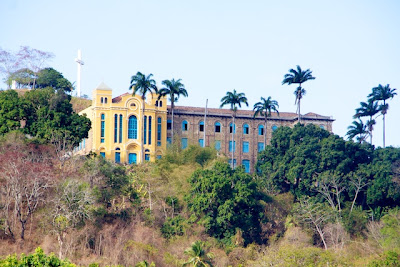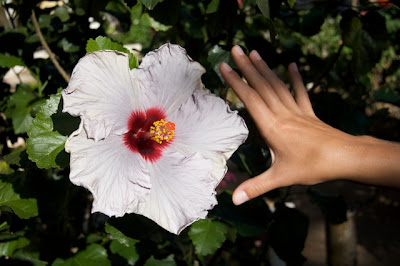It's the most wonderful time of the year.
No, not Christmas, but close. It's the time of year when so many of the fruit trees are laden with ripening fruit!
I can't claim expertise in the area of tropical fruits. Growing up in Canada doesn't really lend itself to firsthand knowledge like that! It strikes me as odd, though, that this is the time of year that fruit is produced, mostly because we are right in the middle of the driest part of the year. According to weather-and-climate.com, we receive an average of less than 10 mm of rain a month, more than 300 monthly hours of sunshine, and have an average temperature of 29-30 degrees this time of year. How does all this fruit manage to grow when it is so hot, sunny and dry? If someone feels inclined to educate me, please feel free to do so!
What I do know, though, is that our backyard is getting ready to explode with fruit!!!
We have a mango tree. (Actually, we have three mango trees, but that's not the point.) The mango tree is big. Like the canopy has a diameter of 30 feet sort of big. It started budding in August.
When I saw this, I wondered how many of the buds would turn into fruit...
Apparently the answer is: All of them!
Yesterday I decided I would try counting how many mangos are ripening on that tree. I counted 100 mangoes on one branch. Then I estimated that there are about 75 branches like this on the tree. (That I can see from the ground!) Good thing we bought a deep freeze! Not sure we can keep up with eating all those mangoes!
Our orange and tangerine (or maybe tangelo, I'm not entirely sure) are also nearly ready for picking. Unfortunately, due to a bit of neglect over the last few years, they only have a couple of fruit on each. We will have no problem eating those as they ripen.
The other fruit that might just overwhelm us is the cashew. Hang on, I know you are thinking I have made a typo calling a cashew a fruit. But it is. Really!
See?
The nut is tucked inside two shells at the top. The fruit is in my hand.
Except I am holding it upside down. It actually grows with the nut pointing to the ground.
This is a baby one growing on our tree.
The cashew fruit (or cashew apple, as Wikipedia tells me it is called in English) is an incredibly fragile fruit. I guess the reason they don't get exported is because only juice would be left after transport. And yes, makes a very tasty juice! It tastes a little bit like a mango crossed with a pear crossed with a bit of mouth-drying choke cherry goodness. I love it!
We have two cashew trees on our yard, and if all their flowers produce... gulp.... They say each tree produces about 15 kilos of fruit a season. Once again, I am so glad we bought a deep freeze!
So I eagerly look forward to the harvest of our bounty over the next few months. It should be a delicious season. And if you want to come taste a cashew fruit or pick your own mango off the tree, you'd better get packing!
PS: I started writing this post yesterday. Then I got an email from my parents in southern Manitoba. They told me they had just had the first snowfall of the year. If you are reading this and live in a climate that is preparing for winter, I want you to know that I do feel a twinge of guilt and like I might be rubbing it in just a little bit. On the flip side, what better way to get people to come here on vacation?!?

























.jpg)









